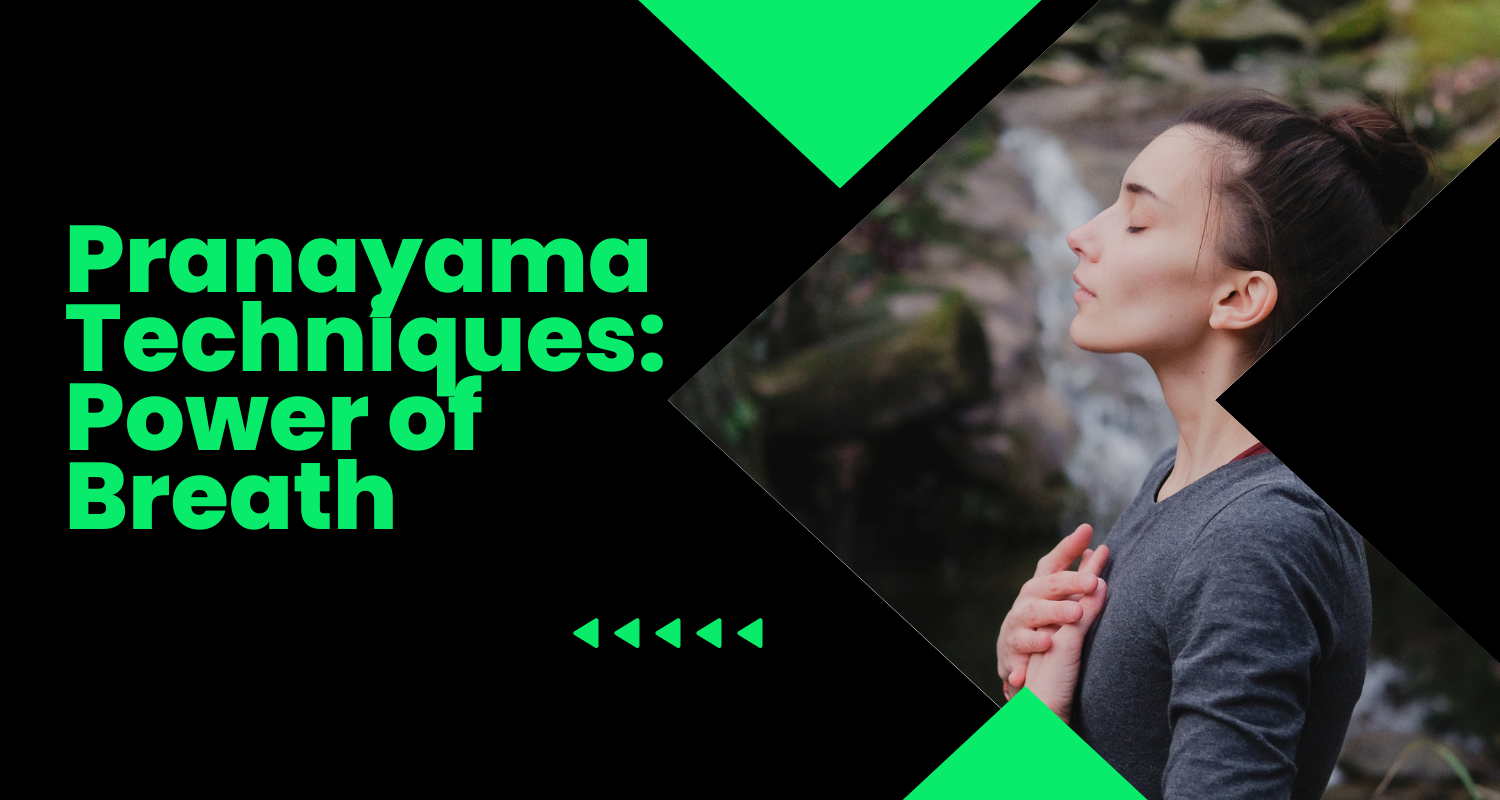Pranayama Techniques: Harnessing the Power of Breath

Pranayama, often referred to as the science of breath control, is an integral part of yoga and meditation practices.
It involves various techniques aimed at regulating and harnessing the power of breath to promote physical, mental, and spiritual well-being.
In this guide, we will explore several essential pranayama techniques and their benefits.
Table of Contents
- Introduction to Pranayama
- The Importance of Breath
- Basic Pranayama Techniques
- Advanced Pranayama Techniques
- Benefits of Regular Pranayama Practice
- Incorporating Pranayama into Your Daily Routine
- Precautions and Considerations
- Conclusion
Introduction to Pranayama
Pranayama is a Sanskrit word that combines two essential elements: "Prana," meaning life force or energy, and "Yama," which translates to control or regulation.
Together, they signify the conscious control and regulation of one's breath to enhance vitality and promote inner harmony.
The Importance of Breath
Breath is the bridge between the body and the mind.
Understanding the significance of breath is fundamental in pranayama practice.
It serves as a powerful tool for managing stress, increasing concentration, and connecting with one's inner self.
Basic Pranayama Techniques
Nadi Shodhana (Alternate Nostril Breathing)
- Nadi Shodhana helps balance the left and right sides of the brain and purifies the energy channels in the body. It is an excellent technique for stress relief and mental clarity.
Ujjayi Pranayama (Ocean Breath)
- Ujjayi Pranayama involves breathing with a slight constriction in the throat, creating a sound similar to ocean waves. It enhances concentration and warms the body during yoga practice.
Kapalabhati (Skull-Shining Breath)
- Kapalabhati is a forceful exhalation followed by passive inhalation. It is known for its cleansing properties, aiding in detoxification and improving lung capacity.
Advanced Pranayama Techniques
Bhastrika Pranayama (Bellows Breath)
- Bhastrika involves rapid and forceful inhalation and exhalation. It increases oxygen supply, boosts energy, and enhances lung capacity.
Sheetali Pranayama (Cooling Breath)
- Sheetali is a cooling breath technique that involves inhaling through a rolled tongue or pursed lips. It calms the mind and reduces body heat.
Bhramari Pranayama (Humming Bee Breath)
- Bhramari Pranayama involves creating a buzzing sound during exhalation. It is effective in reducing stress and anxiety, promoting tranquility.
Benefits of Regular Pranayama Practice
Regular pranayama practice can yield numerous benefits, including reduced stress levels, improved lung function, enhanced concentration, better emotional balance, and increased vitality.
It also prepares the mind for meditation, making it an essential component of a holistic yoga practice.
Incorporating Pranayama into Your Daily Routine
To experience the full benefits of pranayama, consider incorporating it into your daily routine.
Start with basic techniques and gradually progress to more advanced ones.
Consistency is key to reaping the rewards of this ancient practice.
Precautions and Considerations
While pranayama is generally safe for most people, it's essential to practice it mindfully.
If you have any respiratory or cardiac conditions, consult a healthcare professional or a certified yoga instructor before beginning pranayama.
Avoid forcing your breath and listen to your body's signals.
Conclusion
Pranayama offers a profound journey into the world of breath control, helping you tap into the immense potential of your breath for overall well-being.
By incorporating these techniques into your daily life, you can experience increased vitality, reduced stress, and a deeper connection with your inner self.
Start your pranayama journey today, and breathe your way to a healthier and more balanced life.
